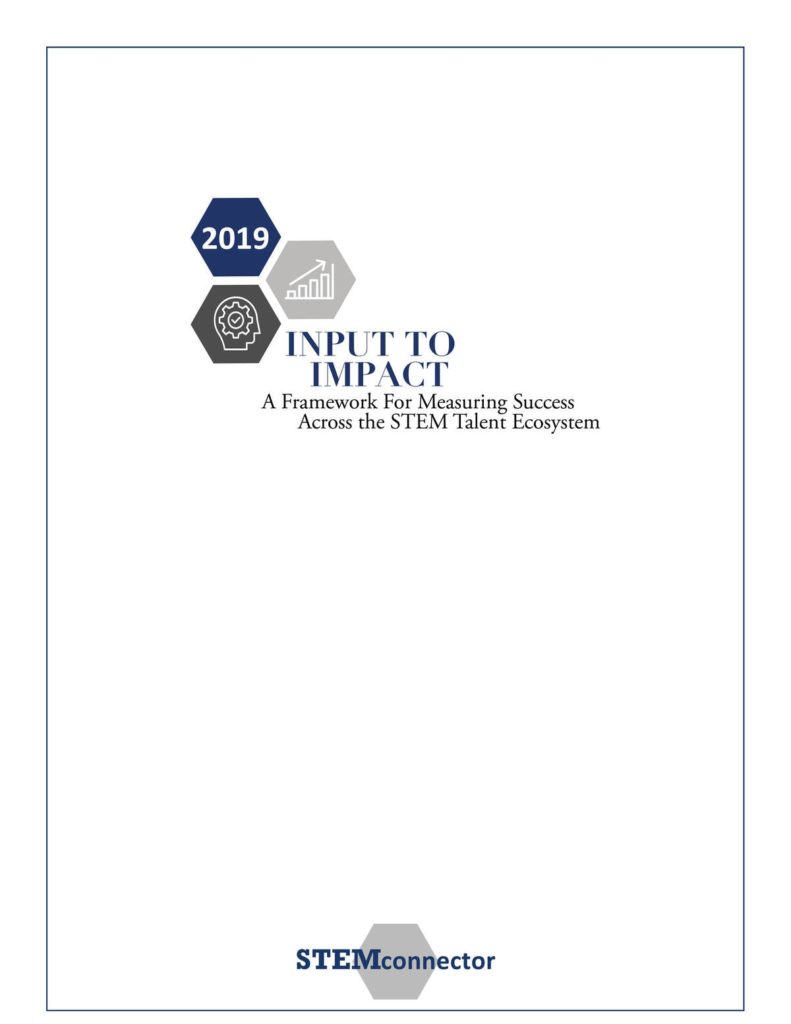STEMconnector is excited to announce our newest signature research piece: Input to Impact. This report was released at our Annual Summit on May 2 and seeks to define success in the STEM talent ecosystem and provide support to the individuals, organizations, and systems trying to assess their impact and enhance their outcomes.
Input to Impact builds off STEMconnector’s 2018 report, State of STEM, that provided a comprehensive view of the STEM talent ecosystem and highlighted some of the challenges and opportunities that exist within the ecosystem. State of STEM uncovered several key findings: there is no one solution to the STEM talent gap; no single organization or individual can influence the ecosystem while acting alone; and there is no single STEM talent gap, but rather a confluence of five critical gaps.
Input to Impact uses these assumptions to define success in the STEM talent ecosystem and provide suggestions and a framework to help readers assess their impact and amplify their outcomes. The report provides a common definition for success and framework for measurement that can be used to plan and target STEM investments for greater impact, and measure progress towards goals. For those already engaged in STEM talent investments, this report provides a framework to assess the impact of existing work and improve returns.
Below are three core insights from Input to Impact:
- Success in the STEM talent ecosystem requires a diverse and STEM-ready talent pool with the skills and mindsets needed to succeed in careers today and in the future. Individuals and systems must be aligned and focused to succeed and support STEM talent pathways.
- There are three dimensions of impact that exist within the STEM talent ecosystem that must be considered when organizations make a decision about where to invest. The three dimensions of impact include:
- Beneficiary: Who will benefit from this intervention?
- Time horizon: When will these benefits be realized?
- Social or business value: What type of value will be captured?
- For organizations to move the needle and enhance their impact while addressing the STEM talent crisis, individuals and institutions must think and act differently, with a better understanding of the complexity and systemic nature of the challenge.
We encourage you to check out the report, Input to Impact, to learn more about how your organization can better measure your impact and enhance your outcomes in the STEM talent ecosystem. Together, we can address the STEM talent gaps and amplify, educate, and diversify the STEM talent pipeline.
The report will be available for free download here: https://www.stemconnector.com/input_to_impact
